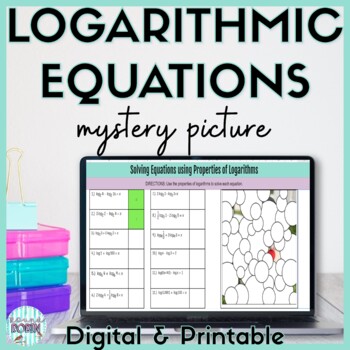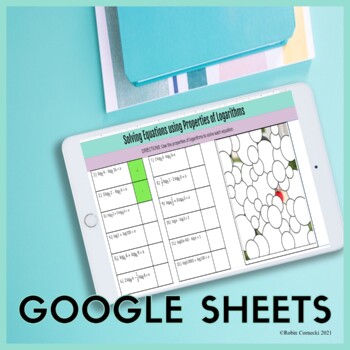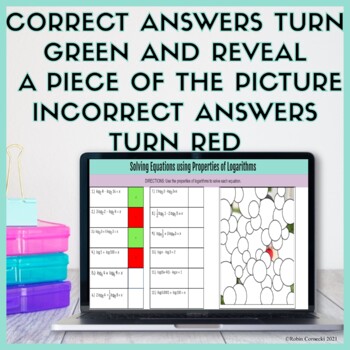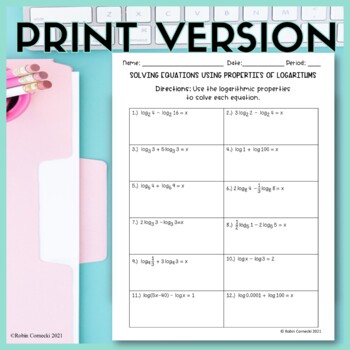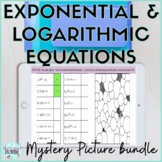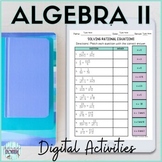Solving Equations using Properties of Logarithms Digital Activity
- PDF
- Google Apps™
- Internet Activities

What educators are saying
Also included in
- Are you looking for engaging Precalculus Digital and Printable Resources for your math classroom? Look no further than with this GROWING BUNDLE of Precalculus digital activities resources including activities on Law of Sines, Law of Cosines, Solving Oblique Triangles, Converting between Radians andPrice $36.00Original Price $45.00Save $9.00
- Are you teaching your Algebra II or Precalculus students how to solve exponential and logarithmic equations? Look no further than this fun and engaging way to practice/review Solving Exponential and Logarithmic Equations with this Self-Checking Digital Activity progression art mystery puzzle resourPrice $12.00Original Price $15.00Save $3.00
- Are you looking for Digital Resources for your Algebra 2 classroom? Look no further than with this GROWING BUNDLE of Algebra 2 digital activities resources including activities on Simplifying Rational Expressions, Adding and Subtracting Rational Expressions, Multiplying and Dividing Rational ExpressPrice $62.40Original Price $78.00Save $15.60
Description
Give your students a fun and engaging way to practice/review Solving Equations using Properties of Logarithms with this Self-Checking Digital Activity progression art mystery puzzle. There are 12 questions that students will answer by solving logarithmic equations for x by using the Properties of Logarithms. There is also a worksheet that you can use for students to keep track of their answers or give to students who need a paper copy of materials.
Correct answers turn green and will reveal a piece of the mystery picture. Incorrect answers turn red and no pieces are revealed.
You must have a free Google account to access the document.
When you purchase, you will receive a PDF containing the link to this file, printable worksheets, and you will also receive teacher instructions.
✅This activity is self-checking and 0 prep!
I hope your students love this as much as mine did. It is much less intimidating than a worksheet and kept my students motivated the entire class period!
You may also like:
Don't forget to leave a review to earn credit towards future resources at no extra cost to you!
Let's be social!

